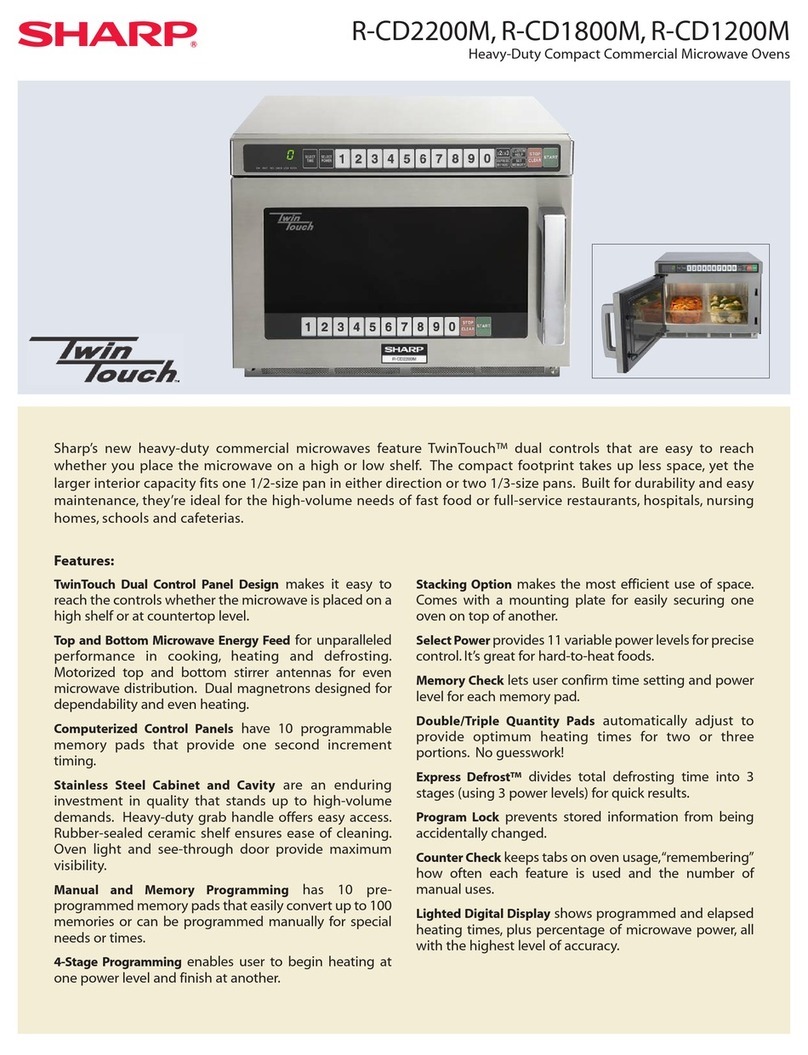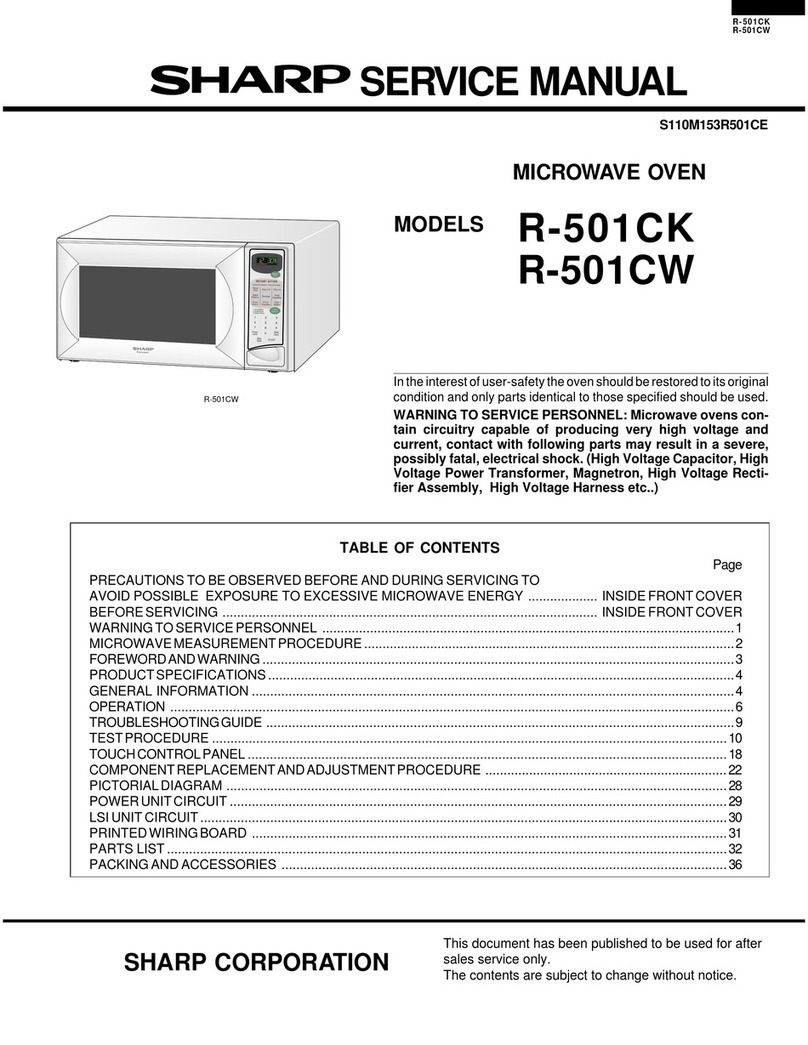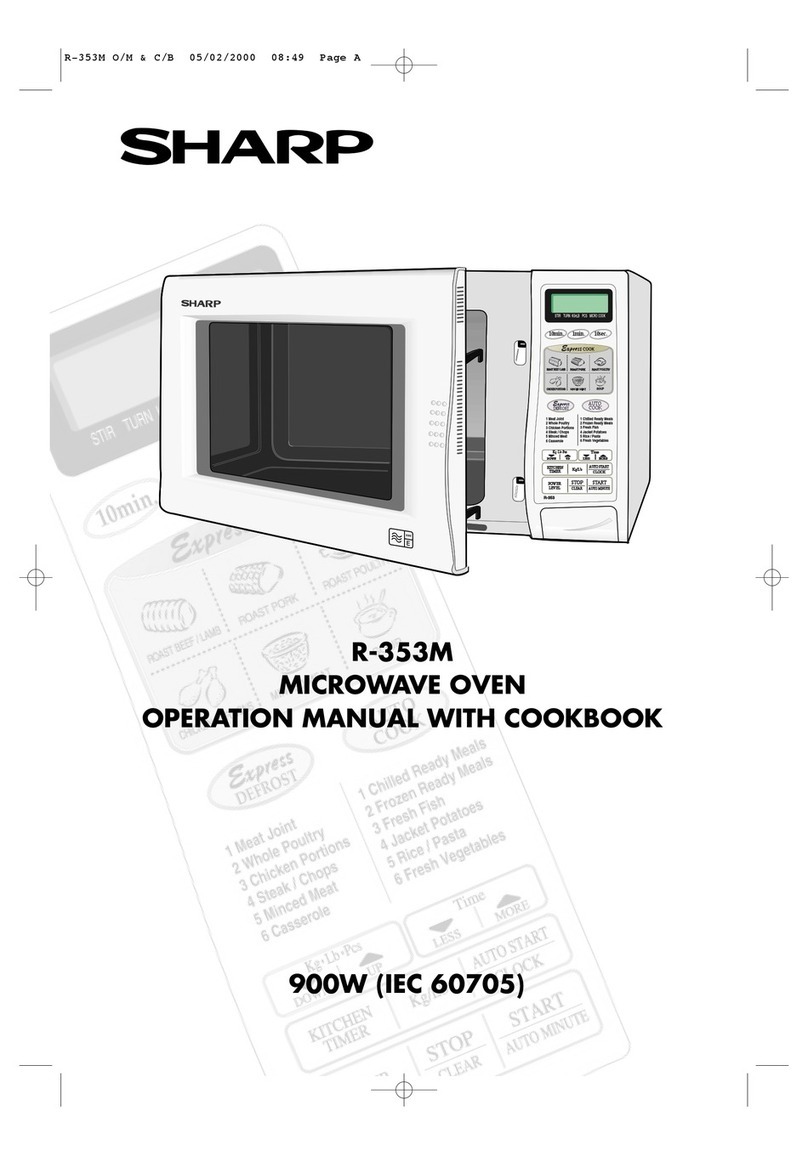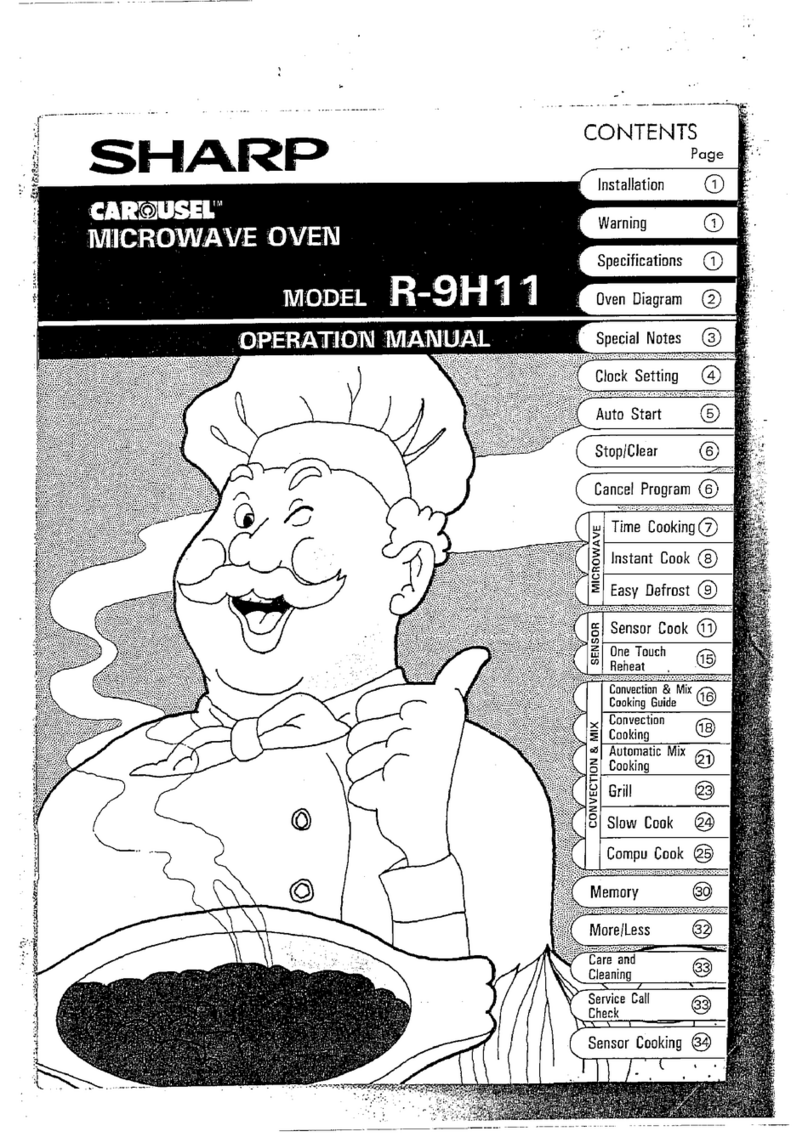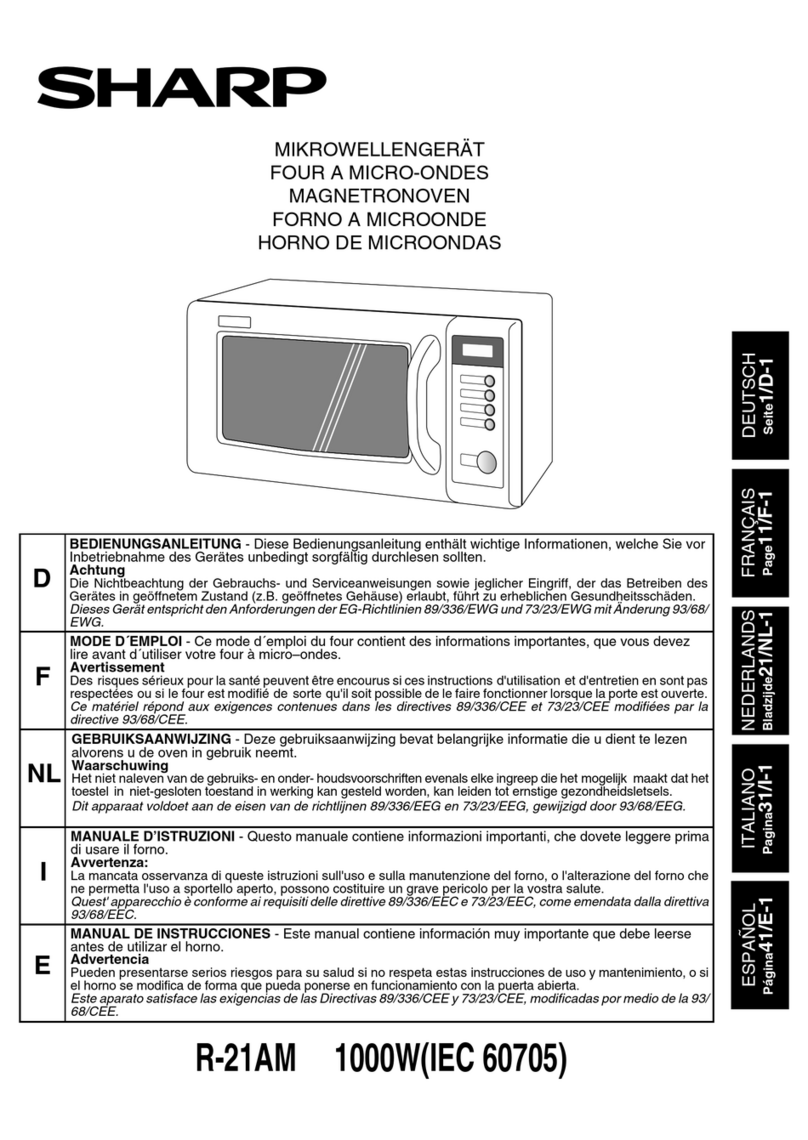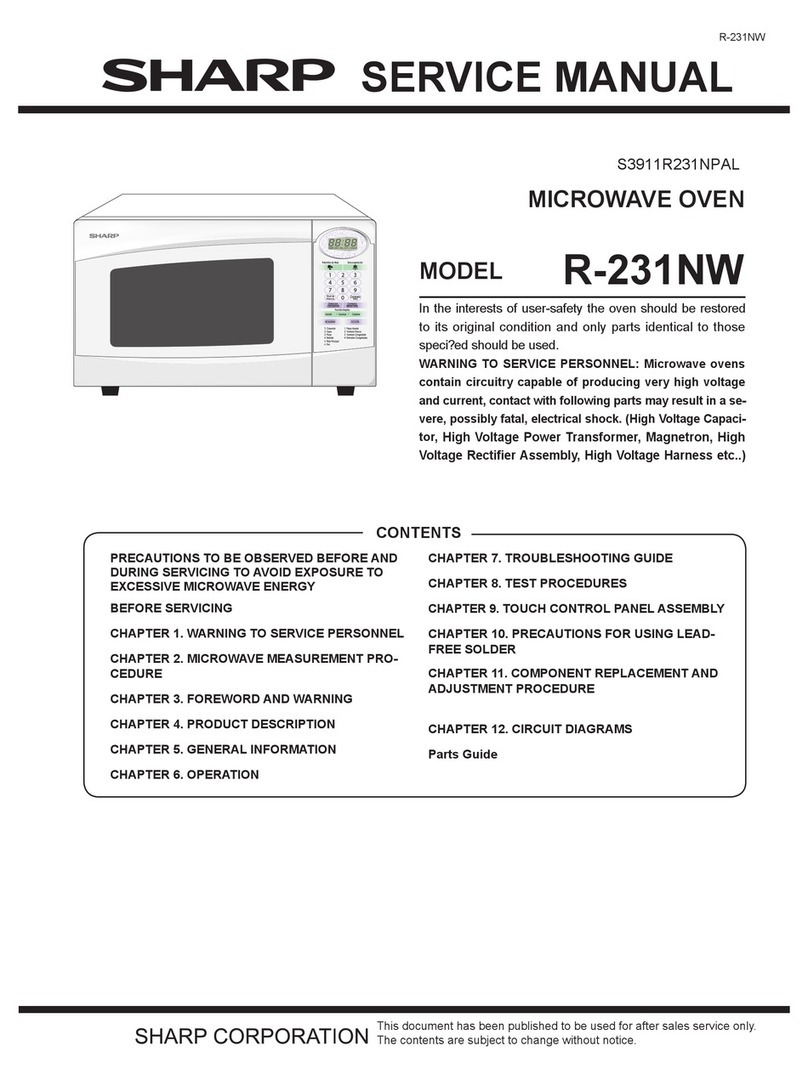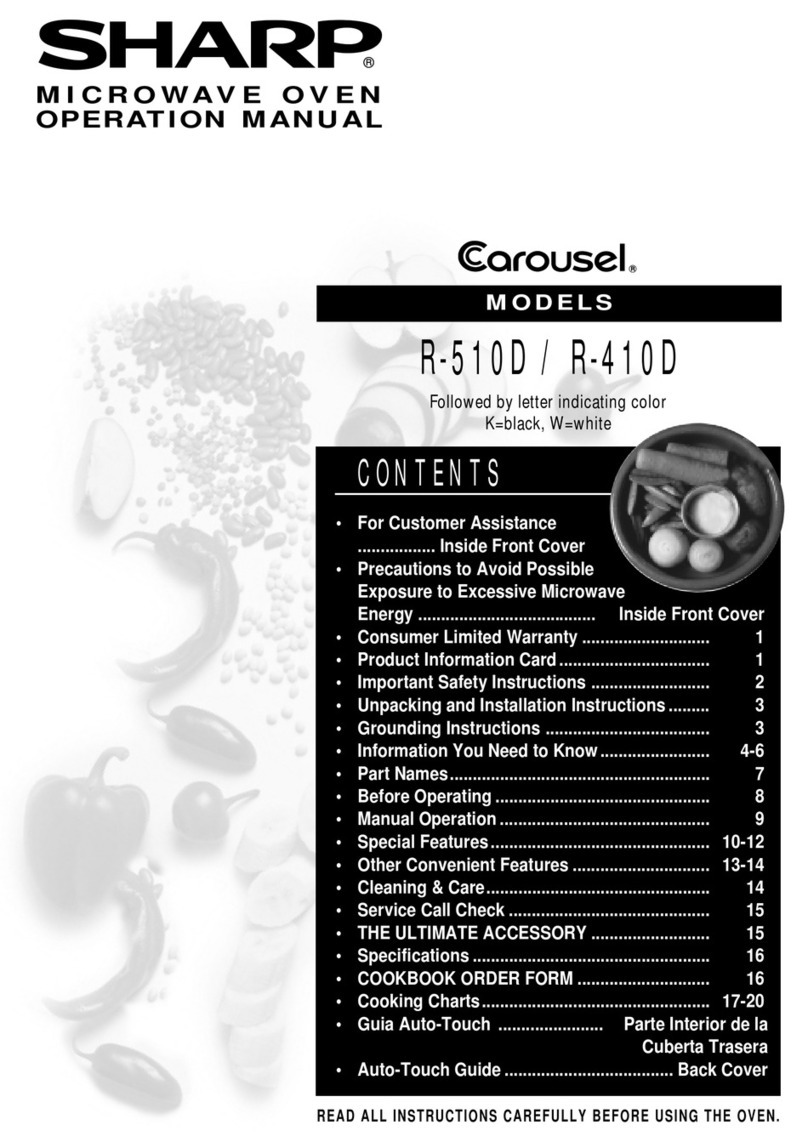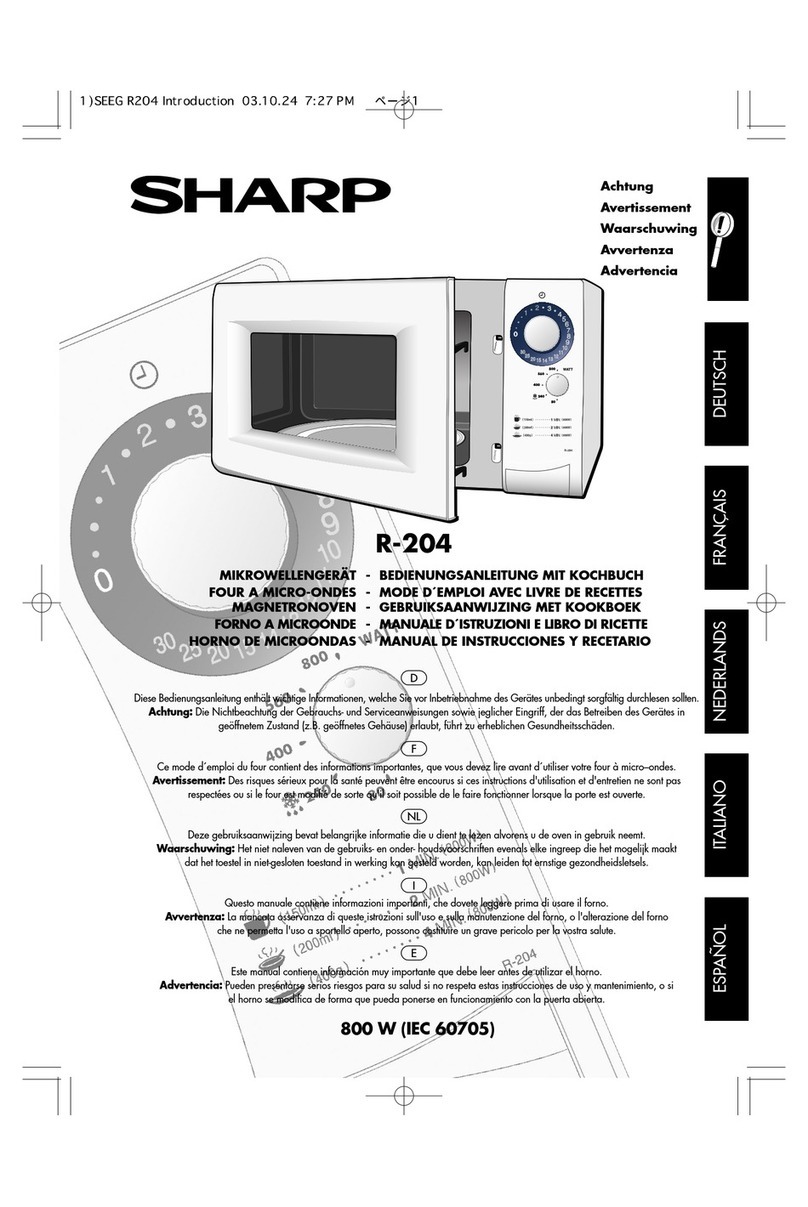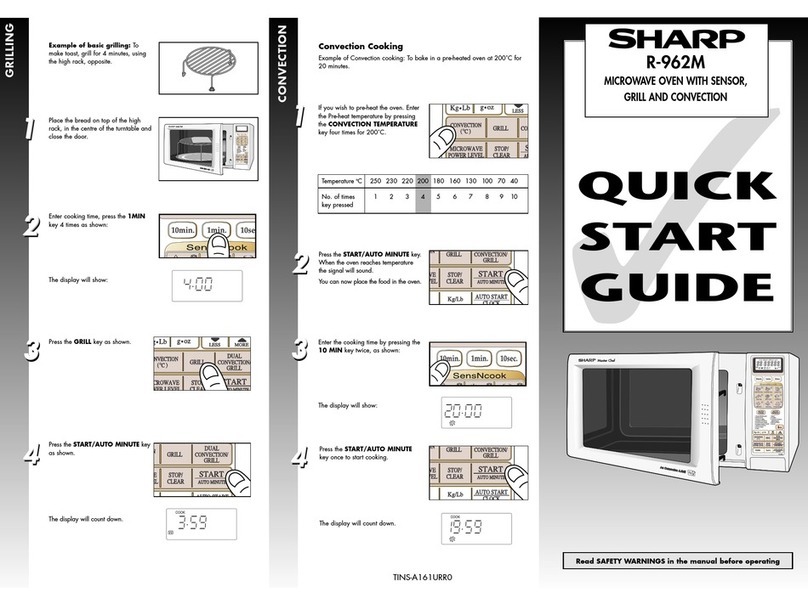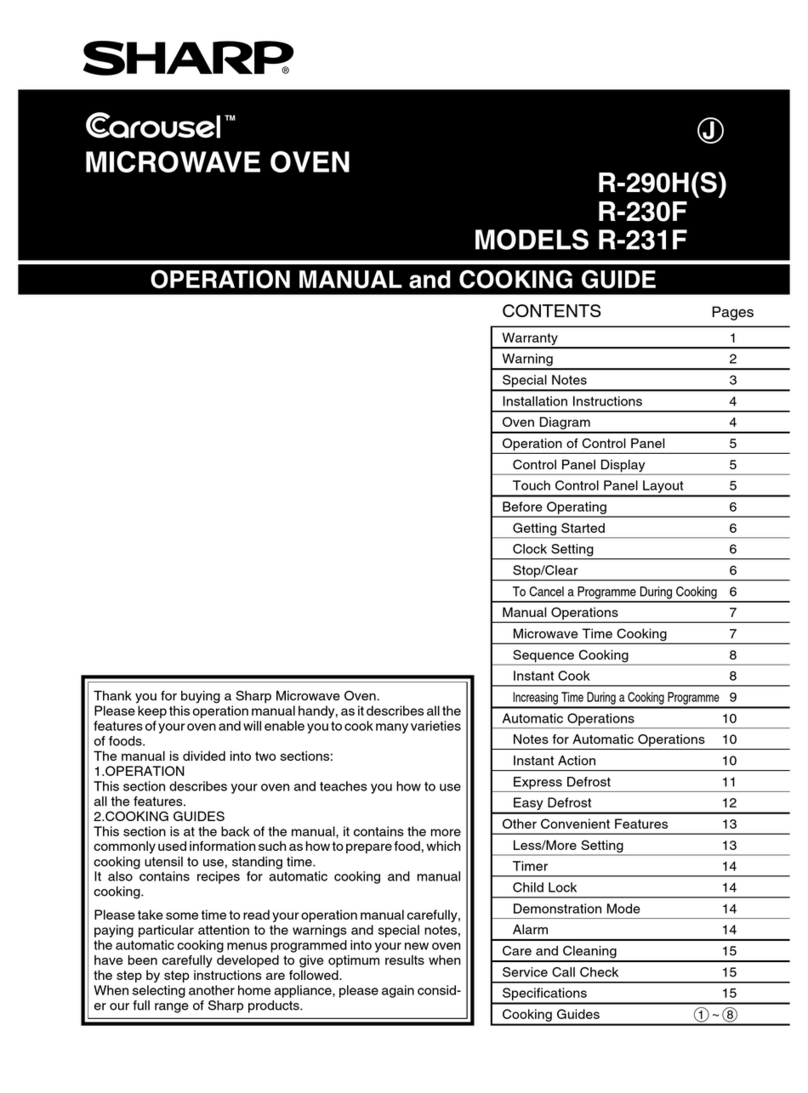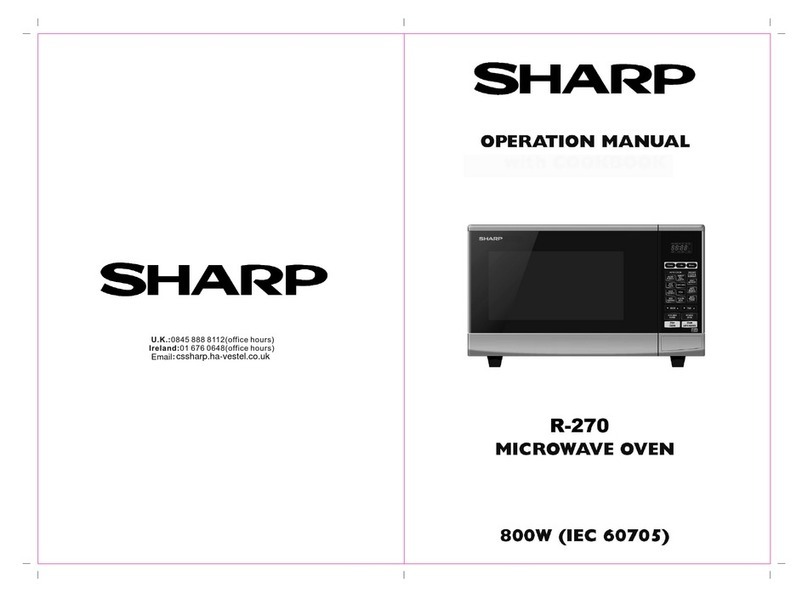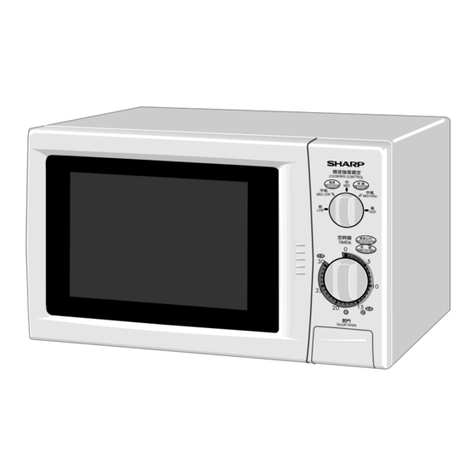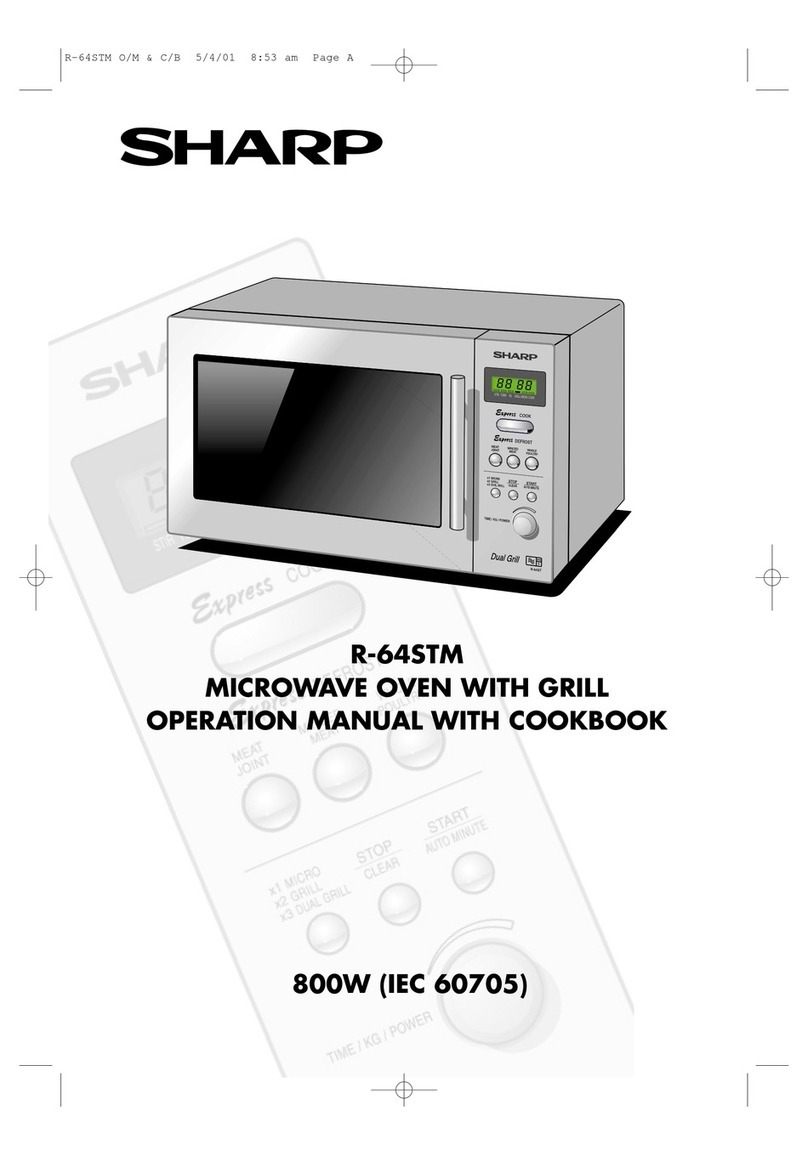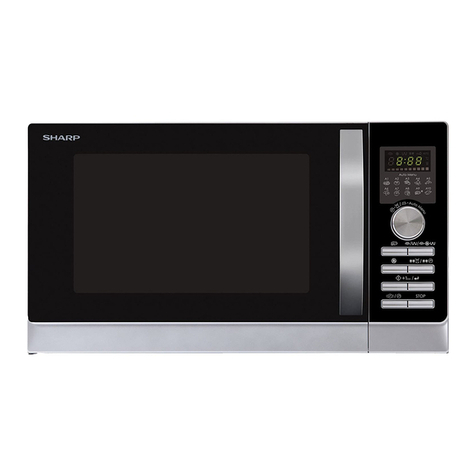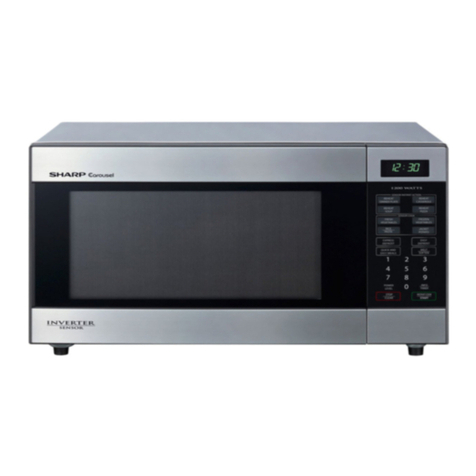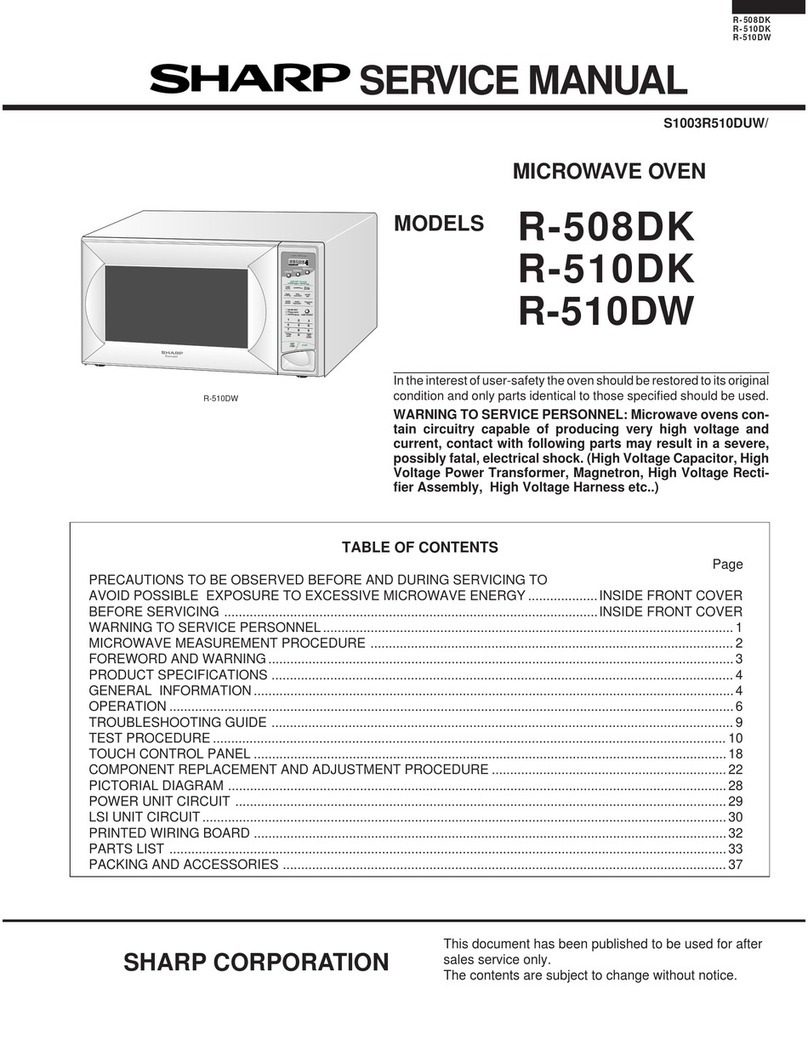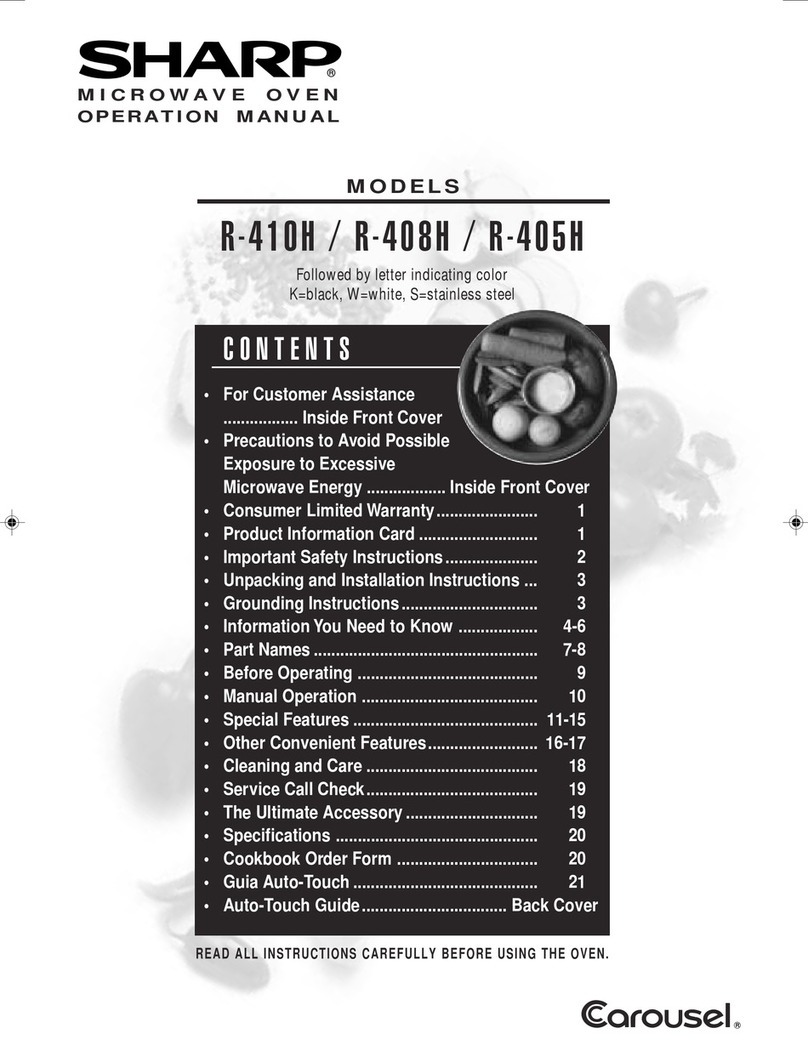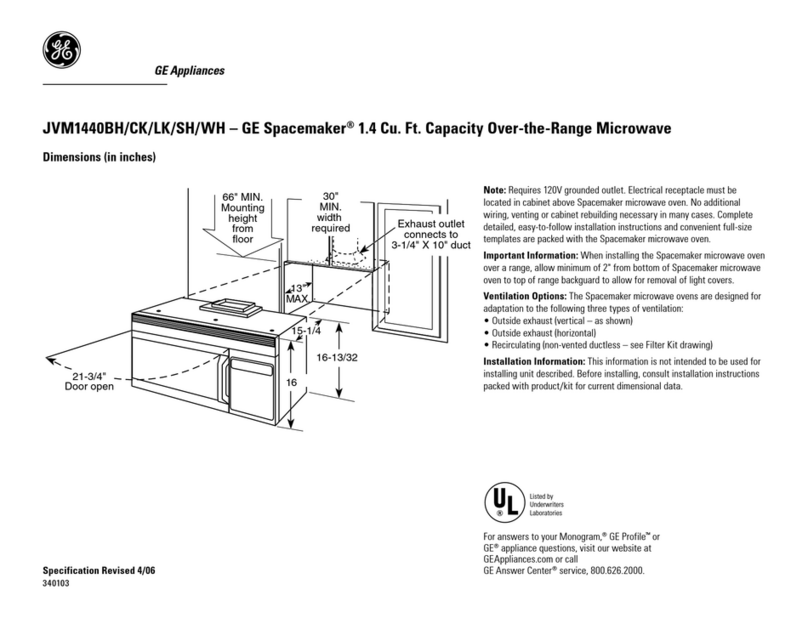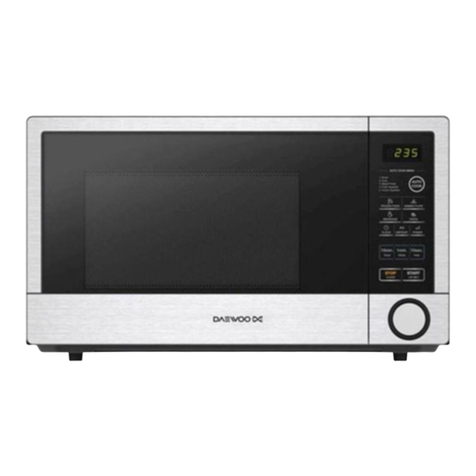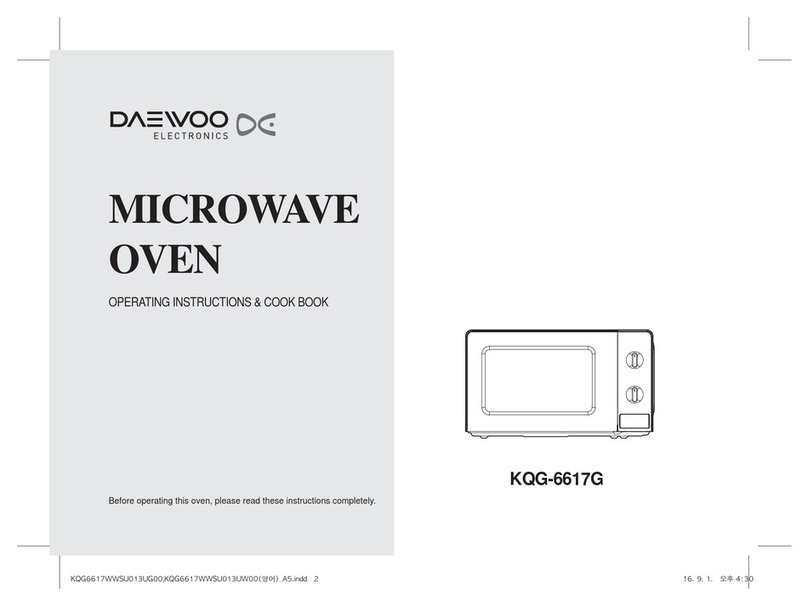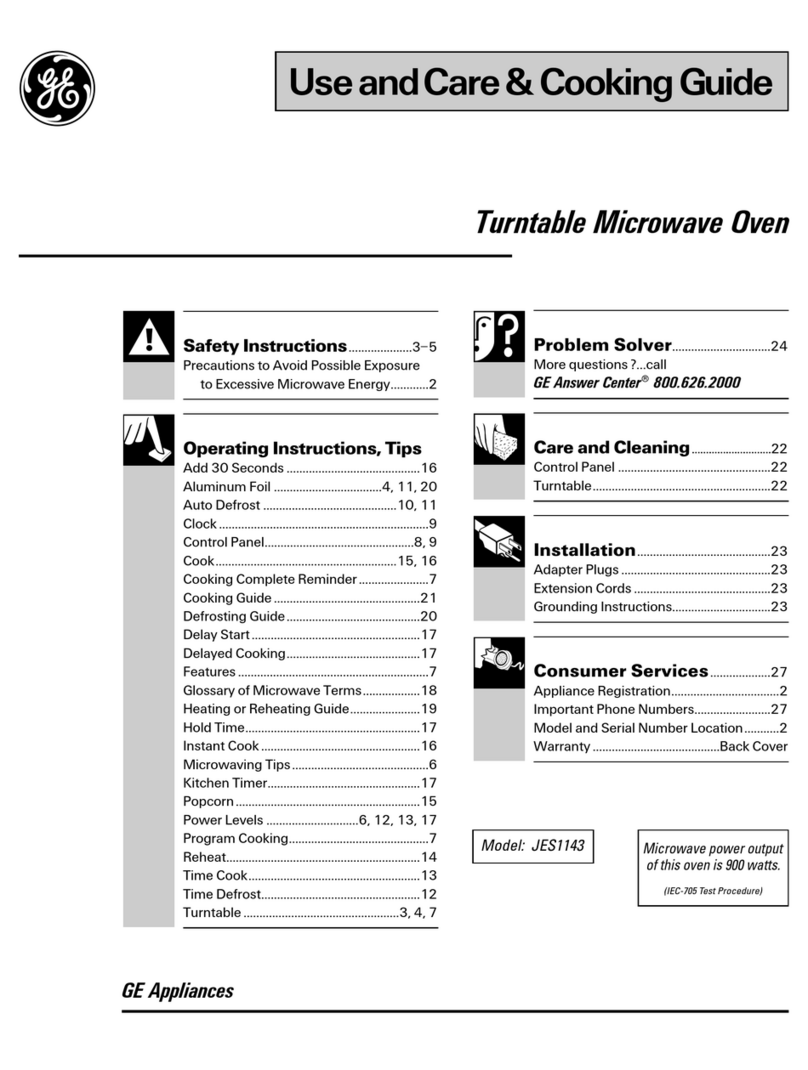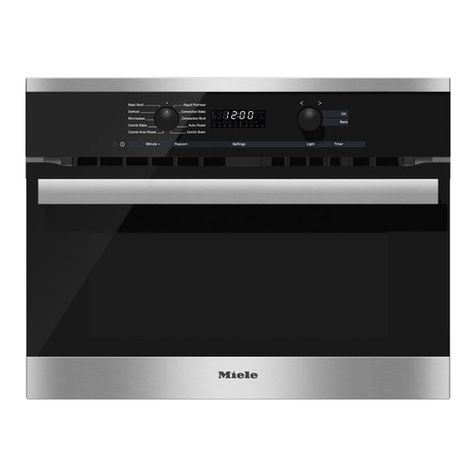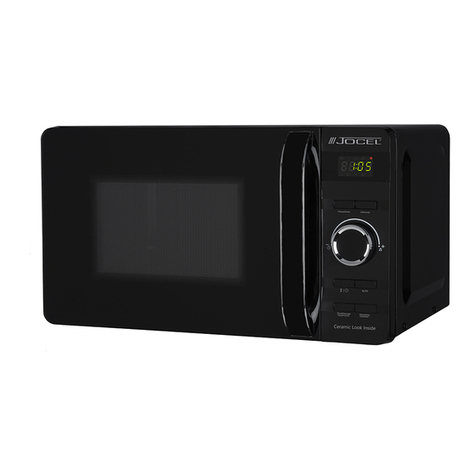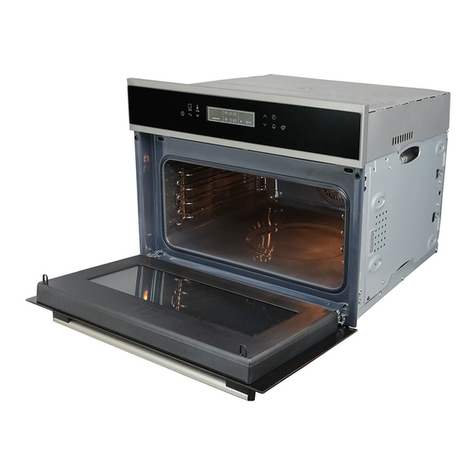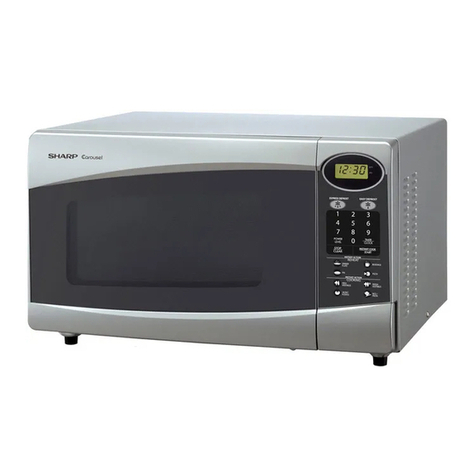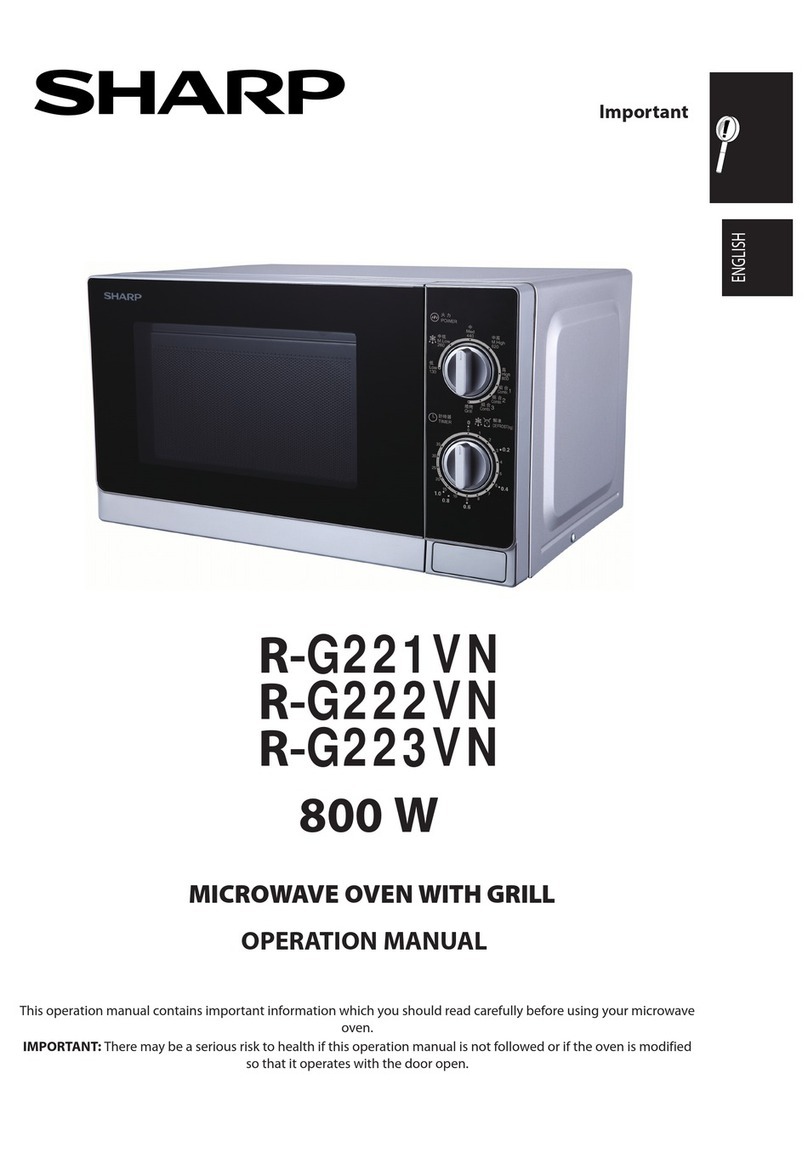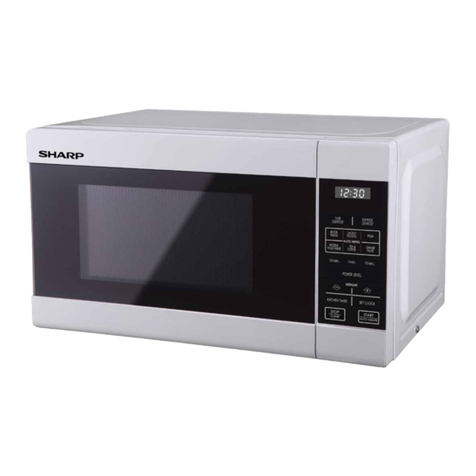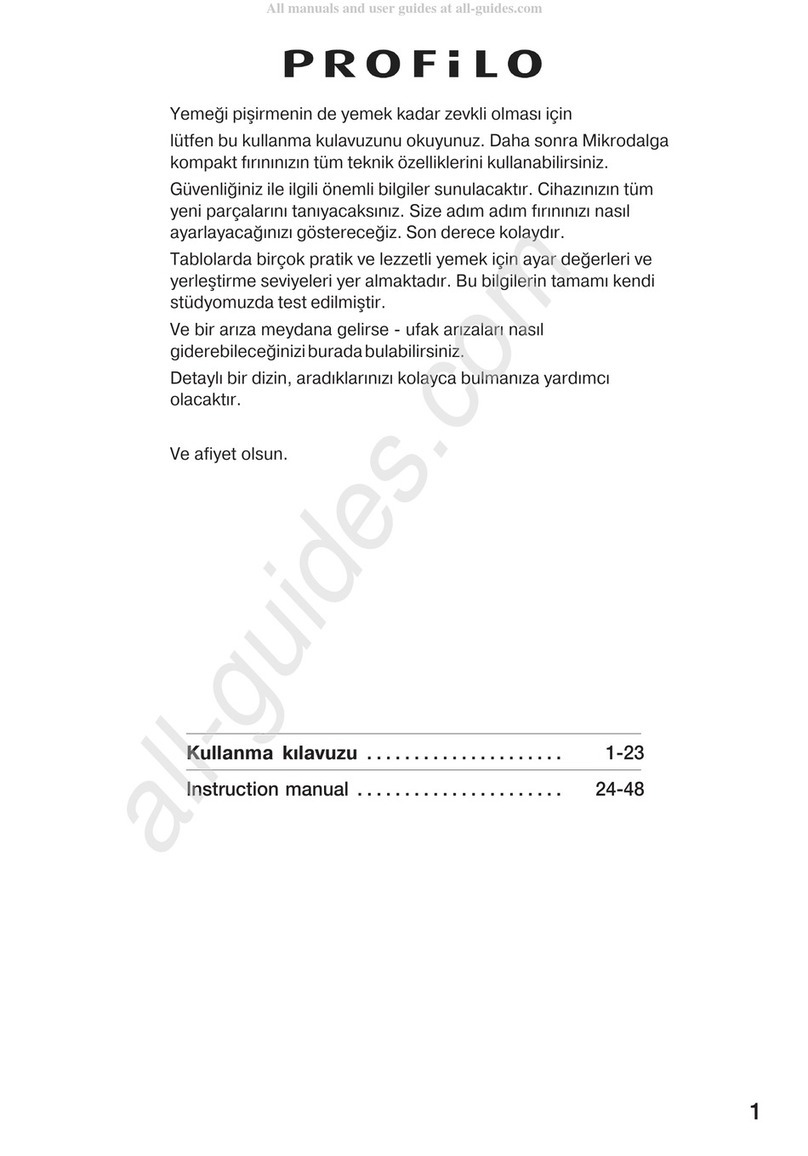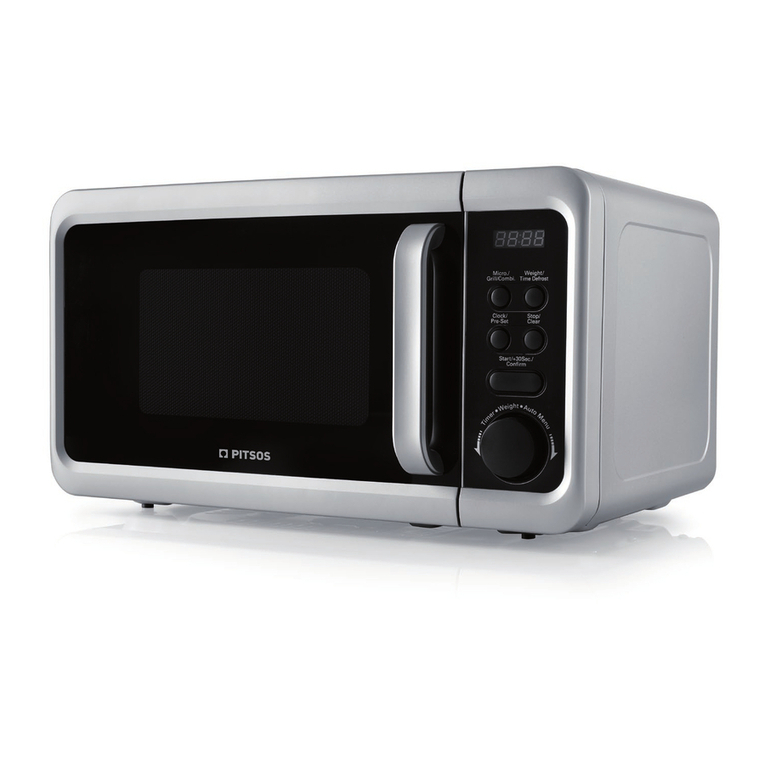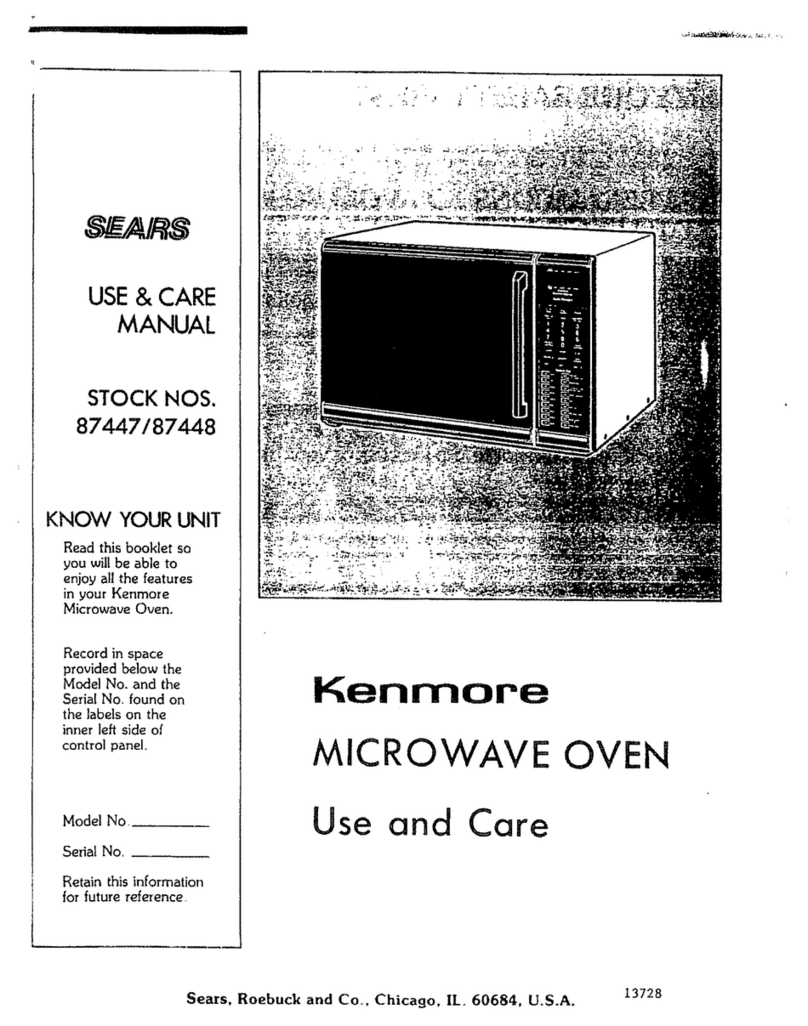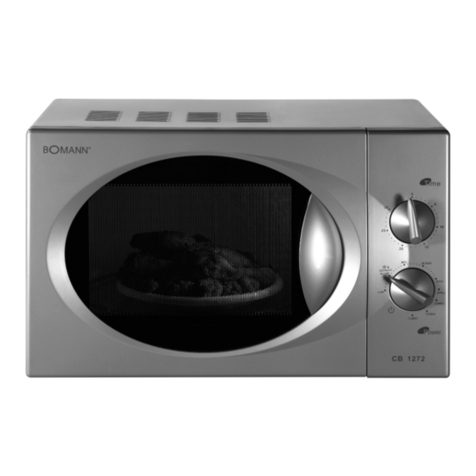
CONTENTS
CHAPTER 1. BEFORE SERVICING
[1] GENERAL IMPORTANT INFORMATION................1-1
[2] CAUTION MICROWAVE RADIATION .....................1-1
[3] WARNING .....................................................................1-1
CHAPTER 2. WARNING TO SERVICE PERSONNEL
CHAPTER 3. PRODUCT SPECIFICATIONS
CHAPTER 4. APPEARANCE VIEW
[1] OVEN ..............................................................................4-1
[2] TOUCH CONTROL PANEL.........................................4-1
CHAPTER 5. OPERATION SEQUENCE
[1] OFF CONDITION .........................................................5-1
[2] MICROWAVE COOKING CONDITION ...................5-1
[3] POWER OUTPUT REDUCTION..............................5-1
CHAPTER 6. FUNCTION OF IMPORTANT COMPO-
NENTS
[1] DOOR OPEN MECHANISM.....................................6-1
[2] MONITORED LATCH SWITCH AND
LATCH SWITCH............................................................6-1
[3] MONITOR SWITCH .....................................................6-1
[4] FUSE T6.3A.................................................................6-1
[5] HIGH VOLTAGE FUSE .................................................6-1
[6] TEMPERATURE FUSE 150C (OVEN).......................6-1
[7] TURNTABLE MOTOR................................................6-1
[8] FAN MOTOR .................................................................6-1
[9] TIMER MOTOR..............................................................6-1
CHAPTER 7. TROUBLESHOOTING GUIDE
[1] FOREWORD..................................................................7-1
[2] CHART............................................................................7-1
CHAPTER 8. TEST PROCEDURES
[1] Procedure A: MAGNETRON (MG) TEST...............8-1
[2] Procedure B: HIGH VOLTAGE TRANS-
FORMER TEST..............................................................8-2
[3] Procedure C: HIGH VOLTAGE RECTIFI-
ER TEST..........................................................................8-2
[4] Procedure D: HIGH VOLTAGE CAPACI-
TOR TEST.......................................................................8-2
[5] Procedure E: SWITCH TEST .....................................8-2
[6] Procedure F: TEMPERATURE FUSE
TEST ...............................................................................8-3
[7] Procedure G: MOTOR WINDING TEST.................8-3
[8] Procedure H: FUSE T6.3A ........................................8-3
[9] Procedure I: HIGH VOLTAGE FUSE TEST ..............8-3
[10] Procedure J: TIMER MOTOR TEST.........................8-3
CHAPTER 10. COMPONENT REPLACEMENT AND
ADJUSTMENT PROCEDURE
[1] BEFORE OPERATING ................................................... 10-1
[2] OUTER CASE REMOVAL ............................................. 10-1
[3] HIGH VOLTAGE TRANSFORMER RE-
MOVAL ........................................................................... 10-2
[4] HIGH VOLTAGE RECTIFIER ASSEMBLY,
HIGH VOLTAGE FUSE AND HIGH VOLT-
AGE CAPACITOR REMOVAL.................................... 10-2
[5] MAGNETRON REMOVAL .......................................... 10-2
[6] POSITIVE LOCK CONNECTOR (NO-
CASE TYPE) REMOVAL ............................................. 10-2
[7] TURNTABLE MOTOR REMOVAL............................. 10-3
[8] COOLING FAN MOTOR REMOVAL........................ 10-3
[9] POWER SUPPLY CORD REPLACE-
MENT.............................................................................. 10-4
[10] CONTROL PANEL ASSEMBLY REMOV-
AL ................................................................................... 10-4
[11] MONITORED LATCH SWITCH, LATCH
SWITCH AND MONITOR SWITCH RE-
MOVAL .......................................................................... 10-4
[12] MONITORED LATCH SWITCH, LATCH
SWITCH AND MONITOR SWITCH AD-
JUSTMENT................................................................... 10-4
[13] DOOR REPLACEMENT.............................................. 10-5
CHAPTER 11. MICROWAVE MEASUREMENT
CHAPTER 12. CIRCUIT DIAGRAMS
[1] Oven Schematic........................................................ 12-1
[2] Pictorial Diagram(Figure S-1) .............................. 12-2
Parts List
R-20A1(S)VN
